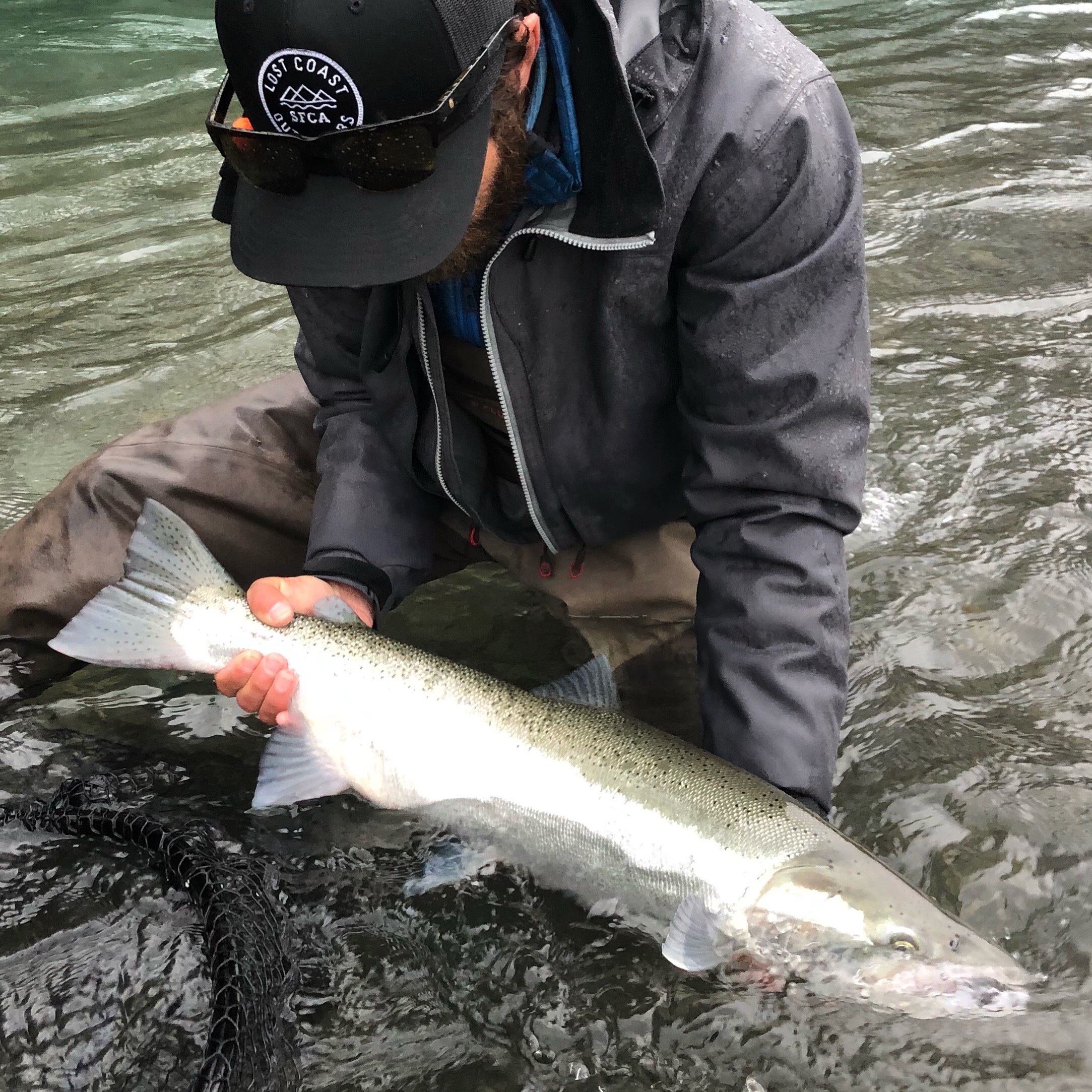It’s Wednesday’s Wild and Wet Winter … a California Trout, Keepemwet Fishing and Lost Coast Outfitters initiative celebrating California’s wild winter steelhead.
Nor Cal fishing guide John Fochetti and a white-hot slab of precious metal.
As we approach mid-March with Spring right around the corner California anglers searching for winter steelhead know their chase is about to change. Come March 31st a number of coastal tributaries will close to angling in order to protect spawning fish. On those rivers still open, anglers will likely see fewer fresh fish and an increase in the number of kelt (post-spawn steelhead on their way back to the Pacific). And, while summer steelhead are still a ways off, now might be a good time to start thinking about the impact of water temperature on caught and released steelhead.
Last month (link to Feb 6 article) we spoke about the impact of 0, 10, and 30 seconds of air exposure on post-release behavior and survival of wild Bulkley River steelhead in British Columbia. Regardless of air exposure amounts, the Bulkley study demonstrated that water temperature was positively correlated with blood lactate. For all intents blood lactate and lactic acid (a term you probably have heard before) mean the same thing. At its simplest, a fish fighting on the end of your line produces blood lactate through anaerobic metabolism because it can’t take in enough oxygen to keep up with the demands of it’s muscles. Imagine how one might feel after sprinting 200 meters full out. After an extended fight, that steelhead is experiencing similar physiological stress. In general, as temperatures rise water carries less oxygen. So, at higher water temperatures with less oxygen we put more stress on fish, regardless if that fish had been left in the water or exposed to air. The key take away is this — a fight at high water temperatures puts more stress on a fish than a similar length fight at lower water temps.
It’s not uncommon for summer run steelhead to encounter water temperatures of 70° F and warmer. A Humboldt State University study on California’s NF Trinity River and Mad River found that summer steelhead caught in water 46-73° F had a mortality rate of 9.6% approximately 36 hours post release. Most (83%) of those mortalities occurred at water temperatures above 70° F. Just last year the Oregon Dept of Fish and Wildlife closed sections or limited angling on the Umpqua River when temperatures rose above 70° in order to protect both Chinook and steelhead.
So as water temperatures rise it becomes even more important to use appropriate tackle, land fish quickly, limit air exposure, and revive fish that need it prior to release.
Join us in “optimizing the outcome of each fish we encounter”
------------------------------------------------------------------------------------------------------------
CalTrout: to learn more about California winter run steelhead
Keepemwet Fishing: to learn more about Keepemwet priniciples
Lost Coast Outfitters: blog on many things fly fishing related

